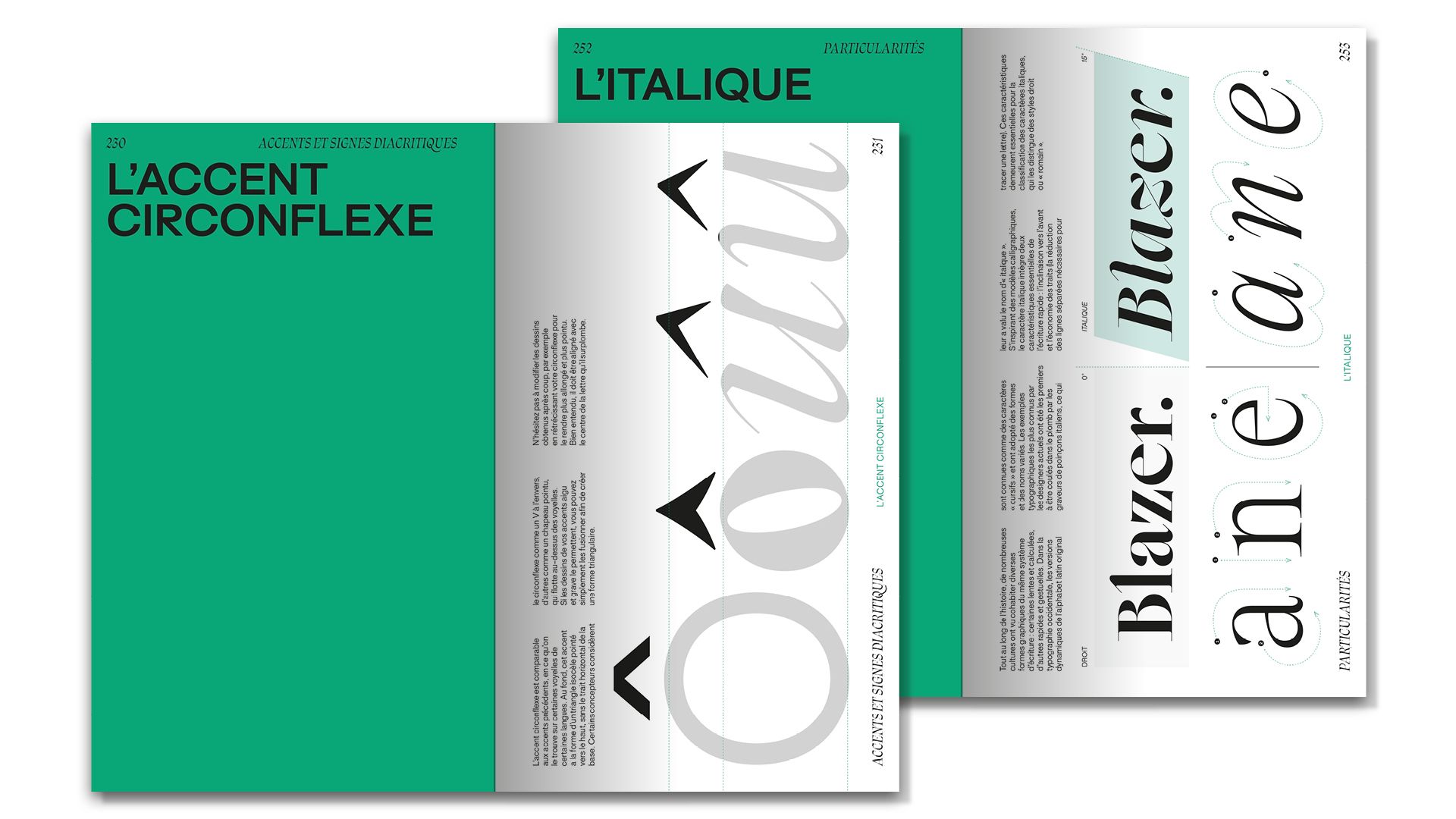
By Sebastien Hayez. Published July 01, 2025
Typographic design: designing fonts
Typographic design
Designing fonts
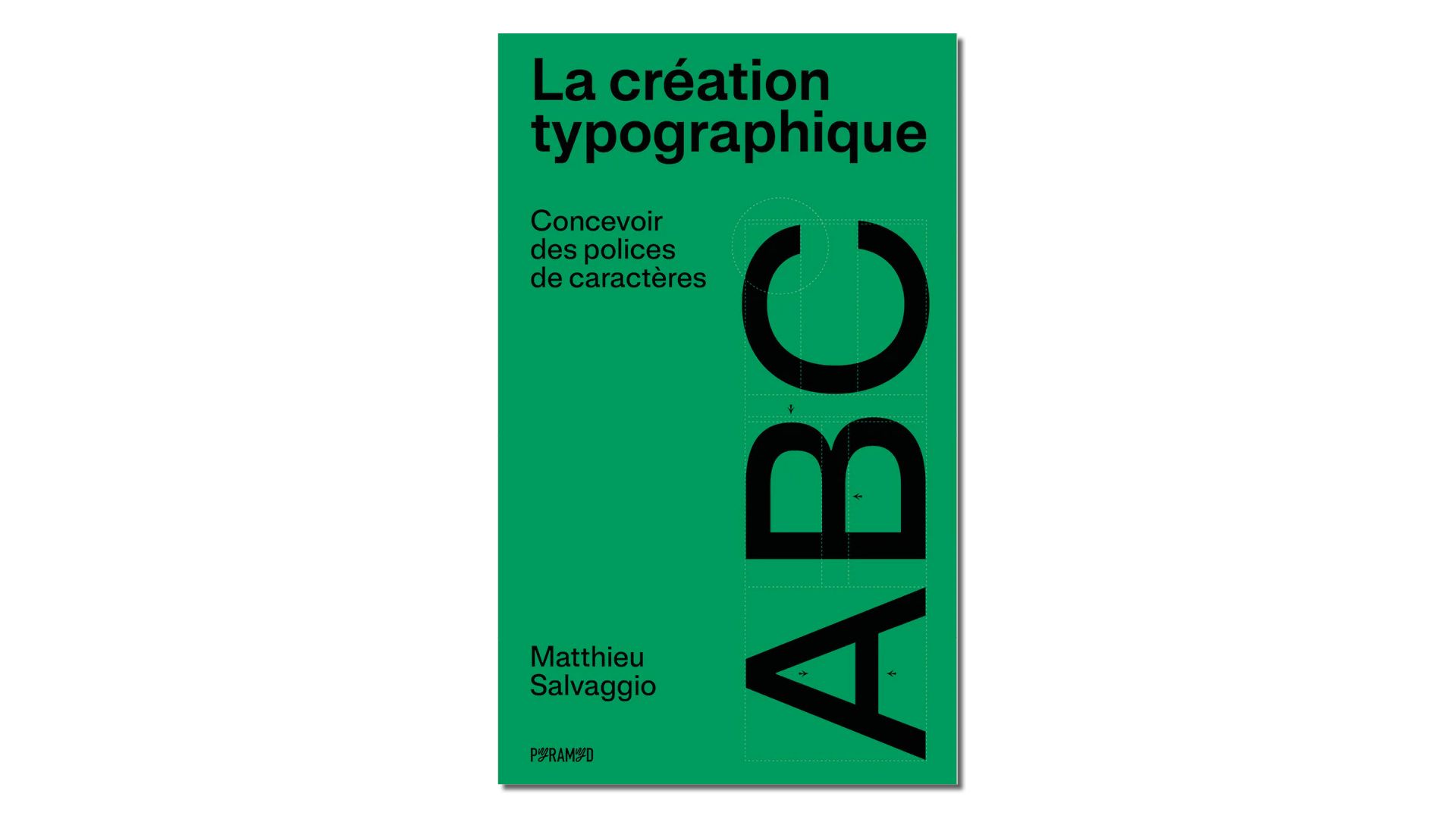
A tool for shaping tools
The Blaze Type foundry's mission is to liberate designers' creativity by offering them typefaces conceived as genuine working tools, combining technical quality and graphic expressiveness. But its action doesn't stop there: student awareness, vulgarization of licensing issues, transmission of typographic culture... Blaze Type also plays an essential educational role.
Back in May 2023, founder Matthieu Salvaggio launched learntype.eu, an online guide for beginners, students or graphic designers wishing to get started in type design. The initiative filled a gap: there are few accessible, up-to-date works on the subject, often confined to confidential publications quickly rendered obsolete by technical developments.
This first guide was intended as a prototype, a laboratory, as much for content as for form. Two years later, French publisher Pyramyd transformed the trial into a publishing success with a redesigned and enriched print version, tailored to accompany today's designers.
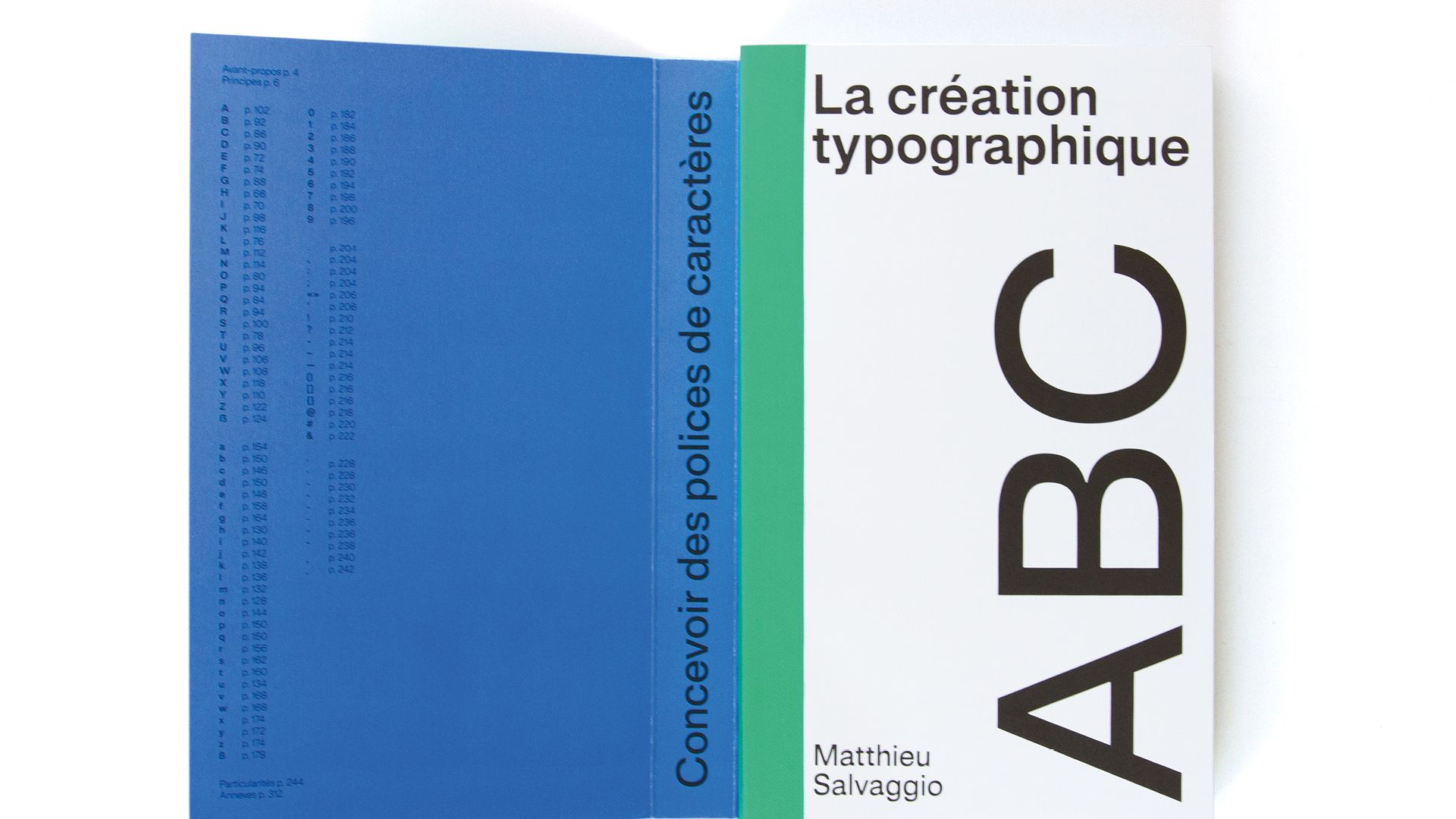
Form to serve content
Behind the sober cover, the object itself bears witness to meticulous design: soft binding with loose spine, ideal for opening flat on the desk, discreet index on the title page, elegant two-color process highlighting the essentials. The book is laid out horizontally, with titles at the top and textual content at the bottom, divided into three concise columns. This original layout guides the eye and facilitates continuous reading, without visual overload.
On the contrary, the explanations are to the point, supported by clear, pragmatic examples taken from the Blaze Type catalog. This typographic and graphic simplicity reinforces the book's use as a handy reference manual.
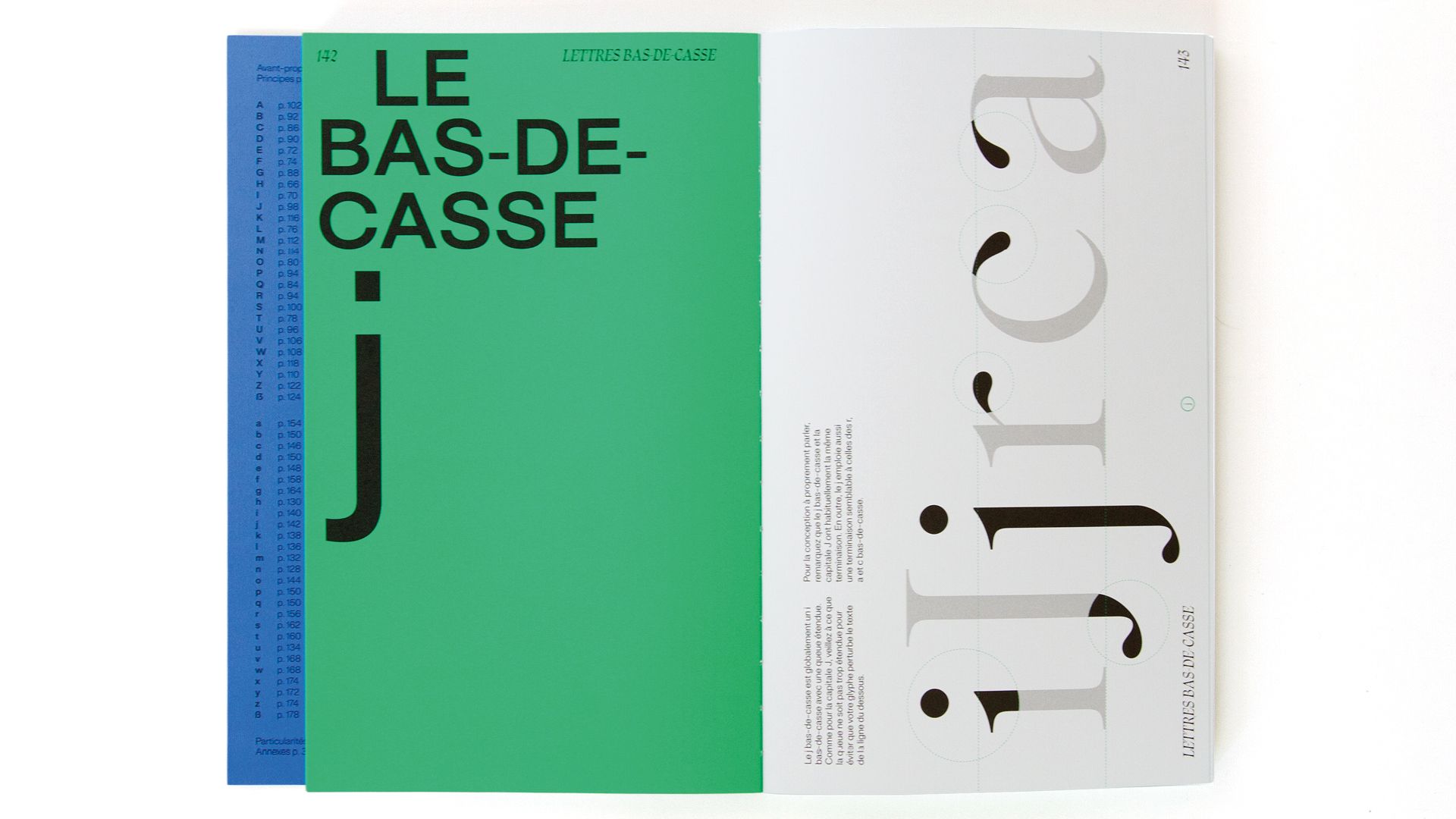
Structured, progressive content
The book is divided into four main sections:Principles, Glyph analyses (i.e. the chapters Capital letters, Low-case letters, Numerals, Punctuation and symbols, Accents and diacritical marks), Particularities and Appendices.
The Principles section lays the foundations: vocabulary, typeface anatomy, classification, serif variations, optical settings... It's aimed at beginners and experienced practitioners alike, as these technical reminders avoid many mistakes, even for the most seasoned.
The Glyph Analysis section, the heart of the book, dissects the construction of capitals, lowercase letters, numerals, punctuation and diacritical marks. Salvaggio follows a logical order: starting with the H, the cornerstone from which other letters with similar structures will follow (E, F, L, T, I), before progressing to more complex forms such as the lowercase. This methodical progression promotes consistency and productivity in the design of a typographic family.
Morphological links are systematic: why redesign an entire glyph if a retouched duplicate will suffice? Every graphic choice is made on purpose, not by chance.
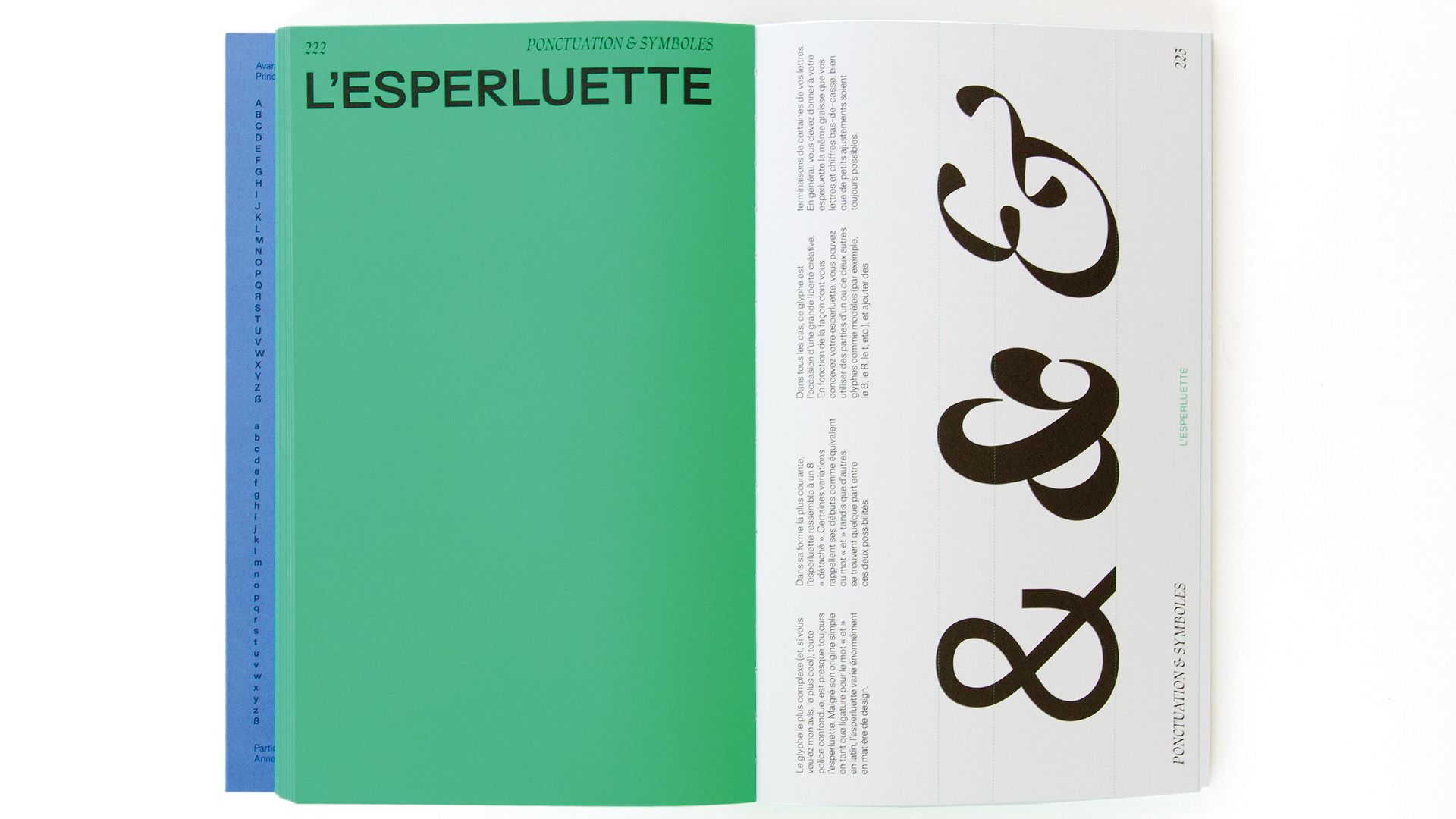
New features: a dive into the subtleties
It's in the Particularities section that the major enhancements to this new edition nestle. Ligatures, stylistic games, but above all a sharp focus on italics: distinction between cursive, oblique and slanted, management of curves, anchor points, serifs... 32 detailed entries decipher the subtleties of this reputedly delicate style, requiring a sharp eye and solid technical mastery.
Finally, the Annexes complete the picture by tackling issues often overlooked: defining the creative brief, marketing a font, licensing models, online resources... All crucial elements in transforming a typeface design into a distributed professional tool.
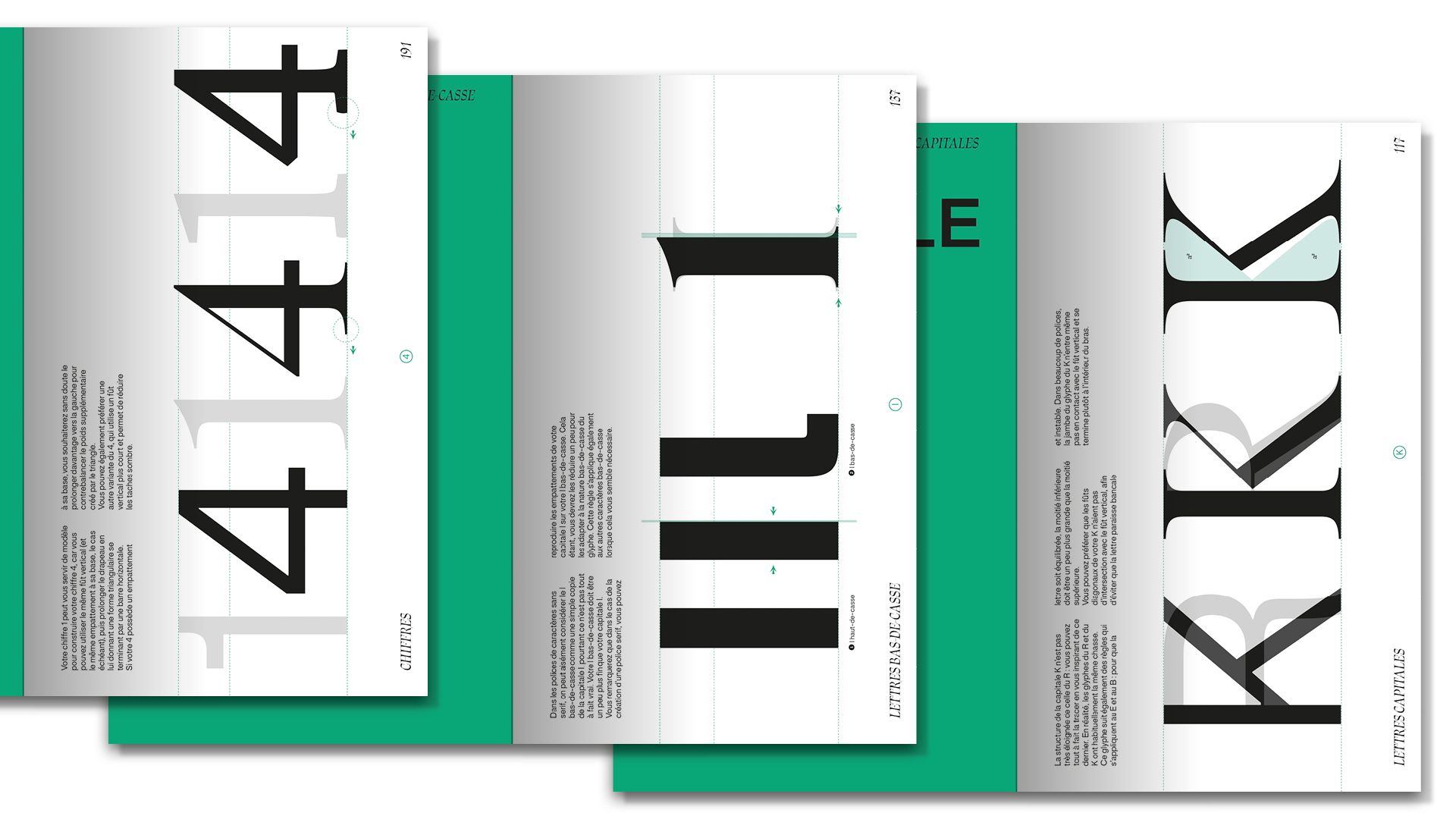
A practical guide to open and re-open
With its 324 clear, accessible pages, Matthieu Salvaggio's book is a contemporary reference for students, graphic designers and enthusiasts wishing to learn about typographic design. Its handy format, exemplary readability and progressive structure make it an ideal office companion, to be consulted as work progresses.
But this first stone already calls for extensions: a second volume could deepen the study of the great historical families (venitians, garaldes, transitionals), explore the wealth of small capitals, or initiate the creation of multilingual systems, from Greek to Cyrillic.
For as the author reminds us in conclusion:
"In this field, we are all students, and will remain so for the rest of our lives."
Author: Matthieu Salvaggio
language: french only
Pages: 324
Dimensions: 16 x 26 cm
Cover: softcover
ISBN: 978-2-35017-621-5
Publication: September 2025
SUBSCRIPTION OFFER: €28 instead of €39
Valid until July 17, 2025. Books will be shipped from September 02, 2025.
